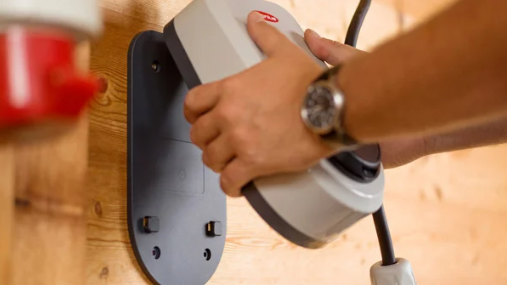
The installation of solar panels in Melbourne continues to increase on a range of commercial properties including industrial warehousing, transport hubs, schools, hospitals, sporting facilities as well as residential homes. With the climate crisis continuing to pose a myriad of threats both ecological and economical, it is more crucial than ever to transition to renewable energy sources.
And the other major reason? Solar energy is extremely cost effective. A solar panel system can produce electricity for decades after installation with very little upkeep needed. Additionally, as technology has developed, the price of solar panels and related equipment has considerably decreased, making solar power more accessible than ever.
And of course, many of the benefits of having a solar power home also extend to a solar powered vehicle. Electric Vehicles, (also known as EVs) have become the more eco- friendly choice for many car owners, as they emit fewer carbon emissions than conventional petrol powered cars. EVs are also cheaper to run, due to their lower fuel costs. And if you’re able to use the electricity from a home that’s powered by solar power? Even better. You’re ticking every budget box and kicking every climate goal. Enjoy the future while the rest of the world catches up to you.
Plugging in your electric vehicle to charge at home while you’re not using it is a terrifically convenient and cost-effective method of keeping your EV charged and ready to go; it’s really no different to giving your smartphone a charge overnight. Here are some things to keep in mind…
How to Charge Your EV
In order to recharge their onboard battery packs, EVs and plug-in hybrid electric vehicles (a.k.a PHEVs) both need to be plugged into an external power source. This is as easy as it sounds; plugging an electric car in for a charge is very straightforward, and it’s honestly no more difficult than plugging in any other device or appliance. However, it’s good to be mindful of the different cables available. Home charges come in three different levels: Level 1, Level 2, and Level 3. While Level 3 chargers, also referred to as DC fast chargers, are the quickest but most costly. You will find these as “Super Charger Stations” on the road and are used like conventional service stations for petrol cars. An EV can be charged up to 80% with a level 3 station in 30 minutes.
The cable that’s most commonly thrown in with the EV when you first buy it is a Level 1 charger that’s designed to be plugged into a standard 240-volt, household power point. This means you can easily use this cable at home; however the rate of charge is extremely slow (also known as trickle charging). This type of EV charging can take days depending on the size of the battery. If you have solar on your roof, you may not be making the most of it.
Level 2 chargers are practical to install in a residential garage or carport and charge at a faster rate than a wall power point charger does, which means your car could be charged in 6 hours completely off solar power if you time your charge right. These chargers are hard-wired directly into a circuit on the switchboard and need to be installed by a qualified electrician.
How Much Does it Cost to Charge an Electric Car in Australia?
The average price of keeping your electric vehicle charged up in Australia varies a bit based on the model, battery size, and local electricity rates. Kilowatt-hour (kWh) prices can run anywhere between $0.15 and $0.40, and recharge rates can similarly impact costs. By utilising off-peak energy rates or exclusive charging programmes made available by their electricity provider, EV owners may be able to reduce the cost of charging their vehicles. All in all, compared to petrol or diesel cars, charging an electric car in Australia is still considered a cost-effective alternative, especially as the cost savings can add up over time.
The Features of the Fronius Wattpilot
The Fronius Wattpilot is an electric vehicle (EV) charging system that offers a range of advantageous features and advantages. Whether you’re charging your EV at home while the sun shines, or while you sleep! The Fronius Wattpilot charger offers convenience and efficiency.
The Fronius Wattpilot can be customised to meet various charging requirements and is made to work with a broad variety of EV models. It is compatible with single-phase and three-phase power supplies and can be placed indoors or outdoors. Users of the Wattpilot can simply monitor and manage charging sessions thanks to its user-friendly interface. It can provide real-time data on charging status, power, and duration, and can be remotely controlled using a smartphone app. It also offers safety management, load management, and intelligent charging technology, which allows communication with the grid and power supply adjustment of charging power. This makes sure that the EV is charged as effectively as possible and lowers the chance of power outages. The Fronius Wattpilot charger is future-proof and can be upgraded with new features and functionality as they become available, and also offers customisable features.
There are two versions of the Fronius Watt Pilot available: a fitted charger design for use at home, that’s available in the 11 kW and 22 kW power categories, and a portable solution for when you’re on the road, available in the 11 kW and 22 kW power categories.
Need a smart EV charger for your electrical car? You can check out the Total Solar Solutions website here. Easy!

